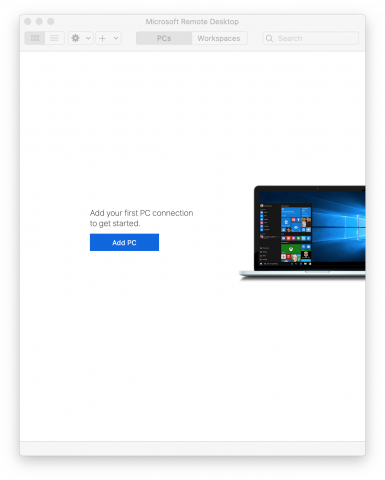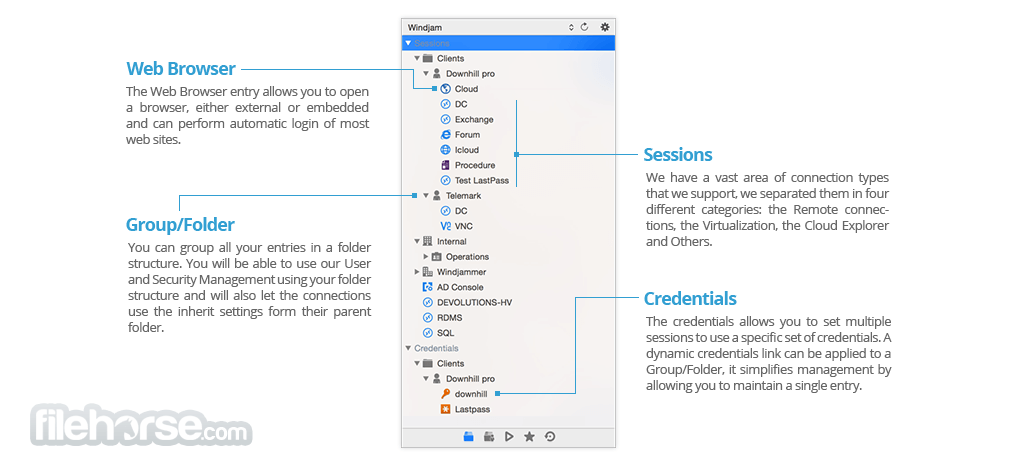

- #MICROSOFT REMOTE DESKTOP FOR MAC PENN STATE INSTALL#
- #MICROSOFT REMOTE DESKTOP FOR MAC PENN STATE PRO#
- #MICROSOFT REMOTE DESKTOP FOR MAC PENN STATE SOFTWARE#
- #MICROSOFT REMOTE DESKTOP FOR MAC PENN STATE CODE#
- #MICROSOFT REMOTE DESKTOP FOR MAC PENN STATE LICENSE#
Deep Freeze allows you to keep workstations safe and free from clutter with reboot-to-restore capabilities.
#MICROSOFT REMOTE DESKTOP FOR MAC PENN STATE SOFTWARE#
Deep Freeze and Microsoft Officeĭeep Freeze and Deploy software from Faronics is the perfect compliment to any Microsoft environment. This means that, whichever method of installation you choose, continued updating for improved security and processing will be easy. Deploy works without any user intervention, for extra peace of mind for an organization’s IT department. Deploy is designed for easy remote control of multiple workstations and to handle patching and Windows-specific updates. To handle patching and updates remotely, the best bet is to use an application management program like Faronics Deploy.
#MICROSOFT REMOTE DESKTOP FOR MAC PENN STATE PRO#
This should allow multiple users to connect to Microsoft Office Pro programs with the virtual machine.
#MICROSOFT REMOTE DESKTOP FOR MAC PENN STATE INSTALL#
Once the operating system image is all set, it’s time to install and configure both the Windows Server and Remote Desktop Session server. From there, the IT professional can adjust the virtual machine as needed, including adding changes like enabling Remote Desktop.
#MICROSOFT REMOTE DESKTOP FOR MAC PENN STATE CODE#
This should include adding specific code that allows computer sharing. The option starts with the IT professional creating an operating system image, making sure to follow all relevant instructions from Microsoft. This method is effective for sharing programs with multiple users, making it ideal for larger organizations. The shared virtual machine route utilizes both a Remote Desktop Session and Hyper-V technology to handle deployment. Once both the configuration file and Office Deployment Tool are in the same place on the workstation, installation can begin. This entire process can also be handled using a text editor, with the right experience. Be sure to click the ‘Shared Computer’ box under the ‘Licensing and Activation’ section before you export. From there, export the configuration file to the same location as the extracted Office Deployment Tool. Once both the employee and the IT administrator in charge of deployment are linked, the administrator can use the Office Customization Tool to create a configuration file.


To connect remotely, both parties will need to join the same group on the RD Session Host server. To begin, the user and the IT professional will both install the Remote Desktop Sessions Host role service on an appropriate Windows Server. This means that multiple users can connect to the device and control it remotely.
The Remote Desktop Session server optionįor this deployment strategy, Microsoft Office Pro is installed on a workstation that has been temporarily configured as a Remote Desktop Session Host. Either they can use a Remote Desktop Sessions Host server or, in some situations, a shared virtual machine, such as a Hyper-V. įrom there, IT professionals have two options for deploying Microsoft Office remotely. The IT team will also need to download the Microsoft Deployment Tool, which can be found on the Microsoft Download Center.
#MICROSOFT REMOTE DESKTOP FOR MAC PENN STATE LICENSE#
The license process must be handled by the account’s admin, however users will need to have internet access at least every few days to continue renewing the license. Businesses should already have a Microsoft Office 365 plan that covers all of the applications used on a regular basis, as well as an eligible license assigned to each user. Each device will also need a reliable internet connection throughout the process. The basicsīefore beginning the deployment process, an IT professional should ensure that all of the relevant workstations have their operating systems updated to support the program. Our guide can help organizations, and their IT professionals, set up this range of ubiquitous programs, including Microsoft Word, Excel, Powerpoint and Outlook, all without leaving their homes. Now, with the ongoing COVID-19 pandemic forcing many companies to keep their employees working at home, remote deployment of Microsoft Office and other programs is essential for IT departments. Since the program’s launch almost 40 years ago, Microsoft Office Suite has been continually enhanced to keep up with the changing times and remain a core part of workplaces around the world.


 0 kommentar(er)
0 kommentar(er)
